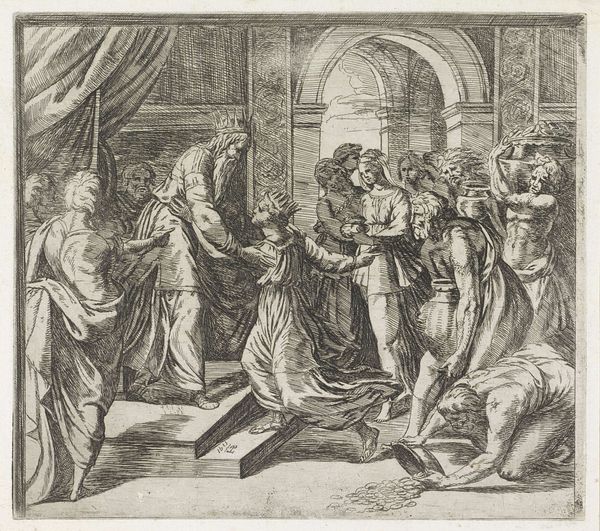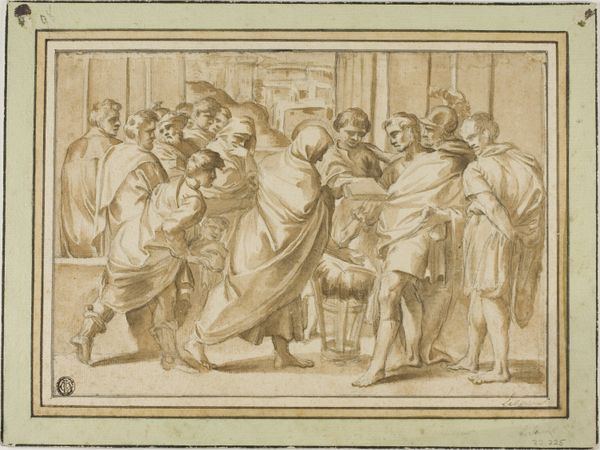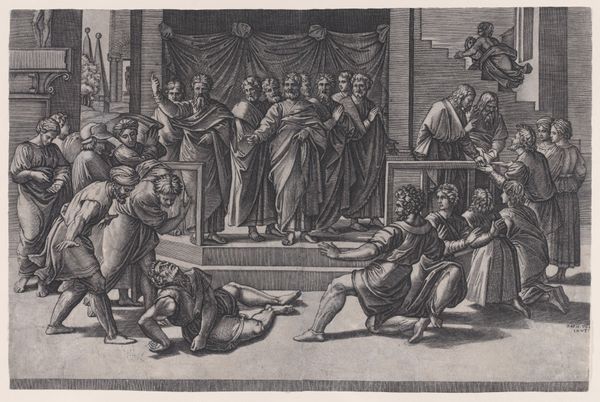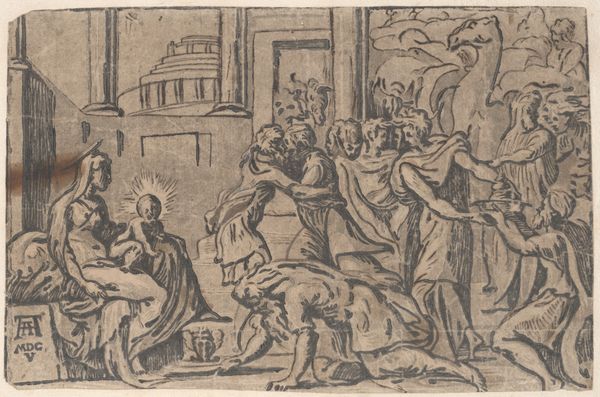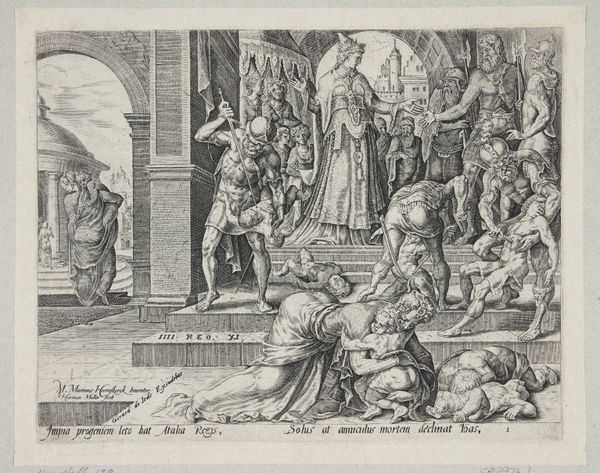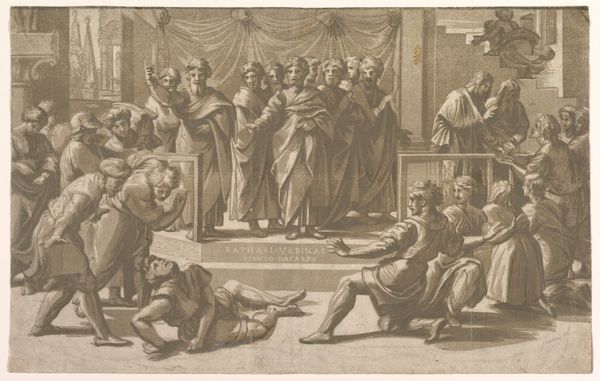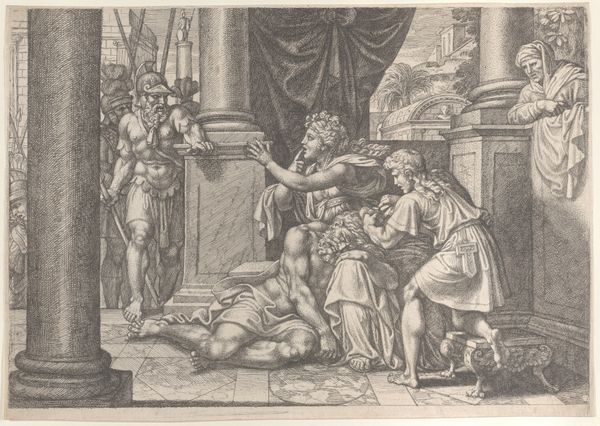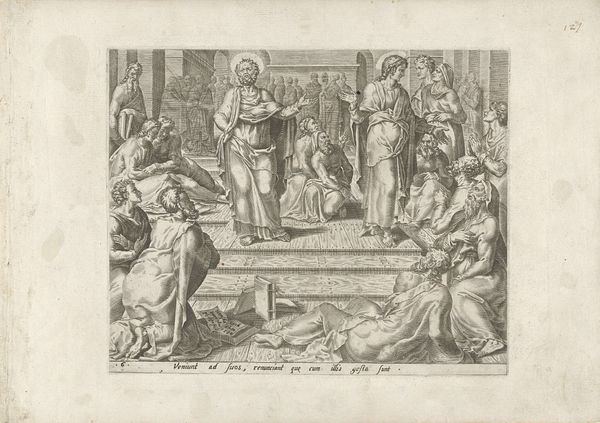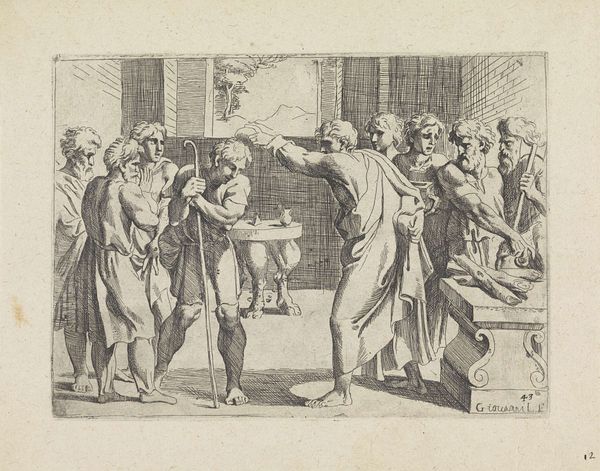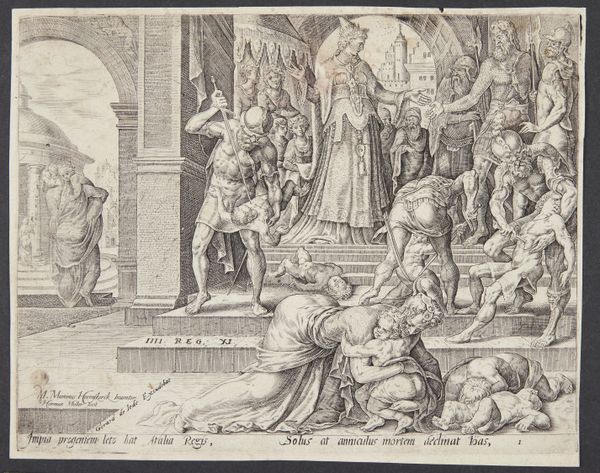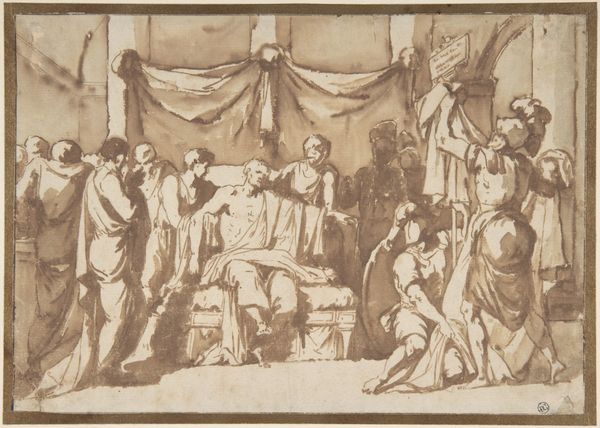
print, woodcut
#
narrative-art
# print
#
figuration
#
form
#
11_renaissance
#
woodcut
#
line
#
history-painting
#
italian-renaissance
Dimensions: height 243 mm, width 375 mm
Copyright: Rijks Museum: Open Domain
Ugo da Carpi made this print, "Death of Ananias," using a woodcut technique called chiaroscuro. This process involves using multiple blocks of wood, each inked with a different tone, to create a layered image with depth and shading. Looking closely, you can see how the material qualities of the wood grain influence the final print. The linear texture subtly appears in the lighter areas, contrasting with the darker, solid forms. The physical act of carving each block requires precision and skill, building on traditions of both printmaking and woodworking. But beyond craft, there's also a social context. Printmaking in the Renaissance allowed for wider distribution of images. It brought art to a broader audience, challenging older models of patronage. The labor involved in creating these prints was significant, yet the resulting images were more accessible than unique paintings or sculptures. This touches on issues of labor, class, and the democratization of art. Ultimately, understanding the material and making of this print allows us to see it not just as a work of art, but as a product of its time.
Comments
No comments
Be the first to comment and join the conversation on the ultimate creative platform.
